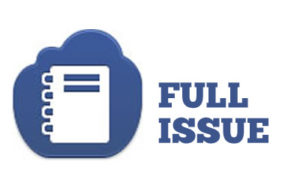 FOCUS: Batten down the hatches: Get ready for Hurricane Florence
FOCUS: Batten down the hatches: Get ready for Hurricane Florence
COMMENTARY, Brack: Let’s have a national media campaign on civics
IN THE SPOTLIGHT: SCIWAY
GOOD NEWS: Host an Oct. 4 community-wide civic discussion
FEEDBACK: McMaster should apologize for dog “joke”
MYSTERY PHOTO: Bold, big clouds
S.C. ENCYCLOPEDIA: Hurricanes
CALENDAR: Great week for wining and dining in the Lowcountry
FOCUSFOCUS: Batten down the hatches: Get ready for Hurricane Florence
Staff reports | Lowcountry residents are being asked by state and local officials to prepare for a major hurricane, including the possibility of evacuation, as the Carolina coast braces for landfall later this week.
“Prepare for the worst, but hope for the best,” Gov. Henry McMaster said throughout the weekend.
Charleston Mayor John Tecklenburg on Sunday said the city was getting ready.
“This is shaping up to be a major hurricane,” Tecklenburg said. “City government continues to get ready for whatever impacts the storm may bring. We ask that citizens do the same by reviewing your family’s plan and paying attention to any announcements from the Governor or other state emergency officials.”
To prepare for the storm, city workers are clearing ditches and drains of debris and the water levels in Colonial Lake and Lake Dotterer are being lowered.
Sandbags will be available today at three locations: the old Piggly Wiggly site on Sumar Street (West Ashley), the Charleston Fire Station at 1985 Bees Ferry Road (West Ashley) and the Public Service building at 2150 Milford Street (peninsula). Sandbags are self-serve, with a limit of 10 bags per household. Citizens must bring their own shovels, but there is onsite assistance for those who need it. Additional sites are expected to open, as resources become available.
In addition to storm preparations, the City of Charleston will also conduct normal city business Monday, September 10. Garbage and trash collections will run on normal schedules.
Online resources
Preparation help. You can download the state’s Hurricane Guide here: English | Spanish. It includes lots of helpful information to help you prepare.
Charleston. The city of Charleston’s hurricane information page can be accessed here: http://www.charleston-sc.gov/hurricane-information. Updates on the city’s preparations for Hurricane Florence will be released and posted to the webpage as new information becomes available.
National weather updates. For the most accurate and up-to-date weather forecasts, residents should stay tuned to the National Hurricane Center (www.nhc.noaa.gov/) and National Weather Service Charleston (www.weather.gov/chs/) websites, as well as local media and the FEMA app.
The American Red Cross in South Carolina offers the following safety tips:
Hurricane safety
- Continue listening to local area radio, NOAA radioor TV stations for the latest information and updates.
- Build an emergency kit that contains food, water and other basic supplies for each family member to last at least three days. Also, don’t forget to include essential medications, copies of important documents and special items for your children and pets.
- Follow evacuation orders (know your zone) and do not attempt to return until officials say it is safe to do so.
- If evacuation shelters open, you can find them by visiting orgor by downloading the free Red Cross Emergency App. The Emergency App also puts real time information about the storm and hurricane safety tips at your fingertips. The app is available in app stores by searching for the American Red Cross or going to redcross.org/apps.
- Don’t forget your pets. Bring them indoors and maintain direct control of them. Prepare an emergency kit for your pets, including sturdy leashes or pet carriers, food and water, bowls, cat litter and pan and photos of you with your pet in case they get lost. Additional pet safety tipsare available.
- Find more information on preparednesson org.
Flood safety
- Turn around, don’t drown. Stay off the roads. If you must drive and encounter a flooded roadway while driving, turn around and go another way.
- If you are caught on a flooded road and waters are rising rapidly around you, get out of the car quickly and move to higher ground. Most cars can be swept away by less than two feet of moving water.
- Head for higher ground and stay there.
- Stay away from floodwaters. If you come upon a flowing stream where water is above your ankles, stop, turn around and go another way.
- Keep children out of the water.
- Be especially cautious at night when it’s harder to see flood danger.
- Continue listening to local area radio, NOAA radioor TV stations for the latest information and updates.
- If your neighborhood is prone to flooding, be prepared to evacuate quickly if necessary.
- Follow evacuation orders and do not attempt to return until officials say it is safe to do so.
More helpful advice
The S.C. Emergency Management Division also advises:
- Know your evacuation zone by going to orgor downloading the SC Emergency Manager mobile app.
- Make sure your car has fuel.
- Make sure you have some cash in case of power outages.
- Keep all of your important papers in a watertight bag.
- Check with your pharmacy to make sure all important medications are filled.
- Make plans for your pets that include extra food, collar, leash and a pet carrier.
- Refer to the preparedness checklists in the 2018 S.C. Hurricane Guide.
- Have a comment? Send to: editor@charlestoncurrents.com
BRACK: Let’s have a national media campaign on civics
Commentary by Andy Brack, editor and publisher | Americans – liberal, conservative and in-between — need to be reminded of what it means to be American.
 For role models, they don’t need to look to just about anyone in Washington or state capitals like Columbia.
For role models, they don’t need to look to just about anyone in Washington or state capitals like Columbia.
All that seems to be coming from Washington is nonsense that spans from a presidential administration in constant crisis mode to a Congress that ping-pongs from outrage to shock to digging in their heels about things petty and consequential. And then there are the tell-all books and anonymous opinion columns that shine spotlights on all of the dysfunction.
In Columbia, there’s not nearly as bad of a mess, but a never-ending Statehouse corruption probe is putting the Energizer bunny to shame. On top of everything else, it’s again time to strap in for a sure-to-come menu of nasty political ads ahead of the November election.
Yuck.
We live in an age of impersonal bluster by electronic device. On the rise are communications that too often are boastful, disrespectful, scurrilous, haughty and malevolent. It’s as if what has become important is simply scoring a point for the current media cycle and salivating about what to do to win the next one.
This is not the kind of behavior that made America great. As Americans, we have long stood up for what’s right. We honored, died and acted upon values that fueled the Greatest Generation to defeat Nazism. We fought for a strong democratic system and institutions buttressed by the values of common good, the rule of law, hope, opportunity for all, and a host of freedoms enshrined in the Bill of Rights.
Unfortunately these days, the United States, long the shining vanguard of democracy that set the example for other countries, has become a creepy old uncle that other nations shy away from, too timid now to embrace. If it were not for America’s huge market for goods, longstanding allies would have jumped ship months ago, all thanks to the escalating rancor of Washington, D.C., that is trickling down to the grassroots of America.
But America is still better than the face it now shows the world. It’s time to return to our true roots of freedom and remember seemingly hidden values that millions still hold dear.
Our history suggests a path. Twenty-six presidential elections ago, Woodrow Wilson won re-election after campaigning against America entering World War I. But soon after he won in 1916, he realized America had a duty to participate. So he embarked on an all-out campaign to persuade Americans of the justness of the war’s cause. It worked.
Now, 101 years later, it is past time for editorials on the need for more civics education. Now is the time for real action, using all of the traditional and social media techniques never dreamed of by Wilson and his publicity machine. Now is the time for a bipartisan collaborative of corporate and civic leaders to fund a broad and deep effort to remind Americans about the times when our country’s leaders treated each other as people, not symbols and hashtags. Now is the time for a $50 million multimedia campaign to reteach common values of civics to Americans from sea to shining sea.
This group of principled leaders needs to use their deep pockets to fuel six months of infomercials and social media in early 2019 to restore people’s faith in democracy. They should showcase how democracy depends on freedom of the press and how it is not the enemy. They need to stress how investing in the common good strengthens all of us, not just the 1 percent. They need to highlight the strength of democratic institutions and the rule of law in protecting the weak from the strong. They need to describe the sanctity of the freedom to worship and, as Franklin Roosevelt once said, how Americans value being free from fear.
Now is the time to invest in our future by retelling the story of America and her democracy. Only by loudly and broadly proclaiming what we have stood for will Americans today be able to really listen to political candidates. So let’s share our neighborliness and decency in a broad-based campaign focusing on civics and values, not continue the surliness rooted in fake Americanisms.
- Have a comment? Send to: editor@charlestoncurrents.com
SPOTLIGHT: SCIWAY
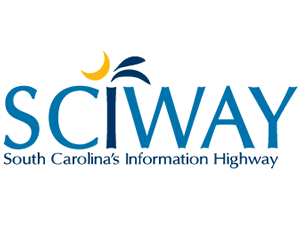 The public spiritedness of our underwriters allows us to bring Charleston Currents to you at no cost. Today we shine our spotlight on SCIWAY. Pronounced “sky-way,” SCIWAY is South Carolina’s Information Superhighway — the largest and most comprehensive directory of South Carolina information on the Internet. It includes thousands of links to other South Carolina Web sites, including Charleston Currents, as well as an amazing collection of maps, charts, articles, photos and other resources.
The public spiritedness of our underwriters allows us to bring Charleston Currents to you at no cost. Today we shine our spotlight on SCIWAY. Pronounced “sky-way,” SCIWAY is South Carolina’s Information Superhighway — the largest and most comprehensive directory of South Carolina information on the Internet. It includes thousands of links to other South Carolina Web sites, including Charleston Currents, as well as an amazing collection of maps, charts, articles, photos and other resources.
- To learn more about this extraordinary information hub that 7 million people visit a year, go to: http://www.SCIWAY.com.
GOOD NEWS: Host an Oct. 4 civic discussion as part of community effort
Staff reports | You’re encouraged to host a small-group discussion in your home, at your church, in a local restaurant or in a library anytime on Oct. 4 to take part in Lowcountry On The Table, a citizen-driven process to identify issues and suggest solutions.
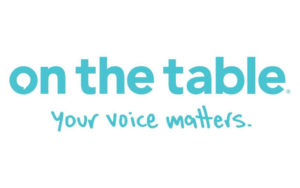 Organizers of the tri-county event, the Library Foundation of the Lowcountry, are hoping to engage thousands of area residents in what could be considered a huge local focus group to provide input to local nonprofits and governments on what people believe really matters in the Lowcountry.
Organizers of the tri-county event, the Library Foundation of the Lowcountry, are hoping to engage thousands of area residents in what could be considered a huge local focus group to provide input to local nonprofits and governments on what people believe really matters in the Lowcountry.
Open to the public, the day-long event invites thousands of residents and “table hosts” to break bread while discussing and recording ways to make the Lowcountry a better place. Top ideas and recommendations from Oct. 4 will be awarded Spark grants to enact change, made possible from the Library Foundation of the Lowcountry.
“With no preordained agenda, this listening event is out to prove that every voice in the Lowcountry matters,” said Library Foundation President George Stevens. “To grow the movement, we’re calling on residents from all walks of life to recruit neighbors, friends, family and colleagues to participate in cozy conversations around a dinner table, a kitchen table, a picnic table, or wherever people gather. Anyone with interest and ideas has a seat at the table.”
How to host a Lowcountry On the Table event
Here are the easy steps to participate as a host:
- Determine a location for friends, family, colleagues, and neighbors to meet for a mealtime conversation on Thursday, Oct. 4. This could be at a restaurant, over a home-cooked meal, a potluck, cups of coffee or whatever works for a (recommended) group of 8-12 people.
- Visit www.lowcountryonthetable.org/hosting to register as a host, subscribing for weekly updates on how to deliver a meaningful experience. Hosts will be encouraged to gently guide their table’s discussion to wherever their guests want to go, while providing materials to record key topics. In addition, those who register to host by Sept. 12 will enter the chance to have their table covered at Charleston Grill.
- At the conclusion of the gathering, every participant (hosts and guests) will receive a short email survey to capture their experience which will then be compiled with hundreds of others to make our community stronger.
- For more information visit lowcountryonthetable.org, call (843) 608-1223 and follow updates on Twitter, Facebook or Instagram. The official hashtag for the event is #OnTheTableSC.
The Library Foundation is a 501(c)(3) public nonprofit organization that supports libraries in Dorchester, Berkeley and Charleston counties. Lowcountry On the Table is a public service of The Library Foundation of the Lowcountry that will shape grantmaking and assist governments, businesses, and charities throughout the Lowcountry, set strategy and better understand the needs of the region.
In other Good News:
![]() Expanded service area. Congratulations to the Lowcountry Food Bank, which last week unveiled a new 20,000 square-foot facility in Myrtle Beach to handle a growing volume of requests for food in Horry and Georgetown counties. Food Lion is providing a $300,000 gift to support the Lowcountry Food Bank’s new food distribution center.
Expanded service area. Congratulations to the Lowcountry Food Bank, which last week unveiled a new 20,000 square-foot facility in Myrtle Beach to handle a growing volume of requests for food in Horry and Georgetown counties. Food Lion is providing a $300,000 gift to support the Lowcountry Food Bank’s new food distribution center.
“At a time when we have experienced yet another historic number of pounds of food and meals distributed to people across the region, it is critical that we continue to evolve our operations to be increasingly responsive to meet the ever-growing need of people who are food insecure,” said Pat Walker, Lowcountry Food Bank president and CEO. “We are so thankful to Food Lion for their continued partnership and significant generosity in the critical fight against hunger in the Lowcountry.”
The new Myrtle Beach Regional Food Distribution Center’s location is more convenient for the Lowcountry Food Bank’s community partners and volunteers, and will enable better distribution of fresh produce to those in the community who are food insecure. It will include an expanded cooler space to store fresh, healthy food and an enlarged freezer space to hold more frozen food items. Additionally, Food Lion Feeds is generously donating 25 pallets of food to the new center, which will be distributed to the community.
“Food Lion understands that far too many of our neighbors are fighting hunger, unsure of where their next meal will come from,” said Meg Ham, Food Lion CEO. “We are very excited to know that this investment will allow the Food Bank to expand their capacity to accept and deliver food items right here in Myrtle Beach and surrounding communities. It’s a long-term investment in feeding the community here, and that is something Food Lion takes very seriously. We’re proud to partner on this initiative with the Food Bank to bring fresh, nutritious food to those who need it most.”
In 2017, the Lowcountry Food Bank served more than 23 million meals to 200,000 people who struggle with hunger. Nearly 50 percent of the people served are seniors and children, and one in five children is food insecure in South Carolina.
Second half kickoff for Charleston Jazz Orchestra. The Charleston Jazz Orchestra (CJO) led by Music Director Charlton Singleton kicks off the second half of its Season 10 by welcoming Grammy nominated vocalist René Marie to the stage on September 15 at the Charleston Music Hall, 37 John Street. There are shows at 5 p.m. and 8 p.m. at Charleston Music Hall with tickets between $25 and $60. Click for more.
Commemorating 9/11: Trident Technical College’s Palmer Campus in downtown Charleston will commemorate the events of 9/11 with special screenings of the film “In Our Son’s Name” on Sept. 11, in the amphitheater at the downtown Charleston Campus. The Palmer Campus will host two screenings of the film at 11:30 a.m. and 6 p.m. Both are free and open to the public. Additional information on the film can be found at www.inoursonsname.com. For more information on the screenings at Palmer Campus, contact Regina Smart at 843.722.5562.
WHAT WE LOVETell us what you love about the Lowcountry
![]() Send a short comment – 100 words to 150 words – that describes something you really enjoy about the Lowcountry. It can be big or small. It can be a place, a thing or something you see. It might the bakery where you get a morning croissant or a business or government entity doing a good job. We’ll highlight your entry in a coming issue of Charleston Currents. We look forward to hearing from you.
Send a short comment – 100 words to 150 words – that describes something you really enjoy about the Lowcountry. It can be big or small. It can be a place, a thing or something you see. It might the bakery where you get a morning croissant or a business or government entity doing a good job. We’ll highlight your entry in a coming issue of Charleston Currents. We look forward to hearing from you.
McMaster should apologize for dog “joke”
To the editor:
![]() [Re: Democrats should lighten up, but GOP shouldn’t be tone-deaf]: Reject this or any other person who is offering voters fear-mongering in an effort to win at all costs, instead of moving South Carolina forward. If this vileness is permitted to stand, we will all be diminished.
[Re: Democrats should lighten up, but GOP shouldn’t be tone-deaf]: Reject this or any other person who is offering voters fear-mongering in an effort to win at all costs, instead of moving South Carolina forward. If this vileness is permitted to stand, we will all be diminished.
The dogs are fictions of this person’s mind’s eye. There are no dogs, others, them or whatever imagery that gets conjured up in the scary night that this candidate advocates, intending to divide us, where there is no division among the people. Calling any group of people “dogs” is intended to evoke meanness and enmity among voters and end the discussion there.
Division on policy and opinion is what we should differ on and that is what should be on the table for consideration from all the candidates. No one is a dog. We can and should look for those who want to lead the state; not destroy the common good than binds us. Time to seriously,
[Gov. Henry] McMaster needs to apologize and get back to the people’s business. If you cannot, get out, as we deserve far better.
— Fred Palm, Edisto Island, S.C.
Send us a letter: We love hearing from readers. Comments are limited to 250 words or less. Please include your name and contact information. Send your letters to: editor@charlestoncurrents.com. | Read our feedback policy.
MYSTERYMYSTERY PHOTO: Bold, big clouds
Here’s another marsh scene in Charleston County, but where exactly is it? (It’s not a different view of last week’s mystery but there’s a pretty strong likelihood that thousands of commuters see it every day.} This one is tough, but we hope it’s not as tough as last week’s photo. (We took the photo because we liked the clouds.) Send your guess to: editor@charlestoncurrents.com. And don’t forget to include your name and the town in which you live.
 Our previous Mystery Photo
Our previous Mystery Photo
We’ll admit it. Our Sept. 4 mystery that showed a jet turning into the wild blue yonder was probably one of the toughest mysteries we’ve ever offered. No one identified the location from which the photo was taken as the jet prepared to land at Charleston International Airport. The photo was shot in North Charleston along Spruill Avenue as it crossed Noisette Creek. Hard to believe such a pristine-looking area is surrounded by a city.
Kudos, however, to Marnie Huger of Richmond, Va., and Bill Segars of Hartsville who gave their answers a good college try. Both correctly guessed it was near the airport. Segars noted, “The beautiful blue sky with puff white clouds could be anywhere in this wonderful state. But Charleston County and the airplane tells me that it must be around the Air Force Base/Airport area, I just don’t know exactly where this photo was taken.”
Thanks to all for trying!
Send us a mystery: If you have a photo that you believe will stump readers, send it along (but make sure to tell us what it is because it may stump us too!) Send it along to editor@charlestoncurrents.com.
S.C. ENCYCLOPEDIAHurricane Hugo makes landfall in 1989. NOAA image.
HISTORY: Hurricanes
[Editor’s Note: This entry hasn’t been updated since the early 2000s, which is why it doesn’t include recent hurricanes.]
S.C. Encyclopedia | The term “hurricane” comes from the West Indian word “huracan,” which means “big wind” and is used to describe severe tropical cyclones in the Atlantic Ocean, Gulf of Mexico, Caribbean Sea, and the eastern Pacific Ocean. In the western Pacific, hurricanes are known as typhoons. The development of a hurricane requires an area of low pressure in a region of favorable atmospheric and oceanic conditions. Ocean temperatures must be near or greater than 80 ̊ F and wind speeds at mid- and upper-levels of the atmosphere must be light. At the center of the hurricane is the eye, a region of calm winds and subsiding air immediately surrounded by the most violent winds and precipitation called the eye wall. The counterclockwise rotation of cyclones in the Northern Hemisphere creates spiraling rainbands that span outward from the center. The outer rainbands of a hurricane, which can extend over an area three hundred to five hundred miles in width, contain the highest wind and heaviest precipitation away from the eyewall.
As the Northern Hemisphere summer approaches, more direct sunlight and longer daylight hours allow tropical oceans to warm sufficiently to support hurricane development. For that reason hurricane season runs from June 1 to November 30 each year in the Atlantic Ocean, Gulf of Mexico, and Caribbean Sea. During this time South Carolina is susceptible to land-falling tropical cyclones ranging in strength from tropical depressions (sustained winds less than 39 mph) to tropical storms (winds of 39 to 73 mph) and hurricanes (winds of 74 mph or higher).
Hurricanes are classified into five categories using the Saffir-Simpson scale based on maximum sustained winds, minimum central pressure, storm surge, and damage. Between 1900 and 2004, fifteen hurricanes hit South Carolina directly, making the average landfall once every seven years. Three of the fifteen hurricanes have reached major hurricane status of category 3, 4, or 5 on the Saffir-Simpson scale. The average for any tropical storm or hurricane landfall in South Carolina is once every four to five years. Storms that make landfall along the Gulf of Mexico, Georgia, and North Carolina coastline often impact South Carolina as well. The primary threats from hurricanes in South Carolina include storm surge, high winds, rainfall-induced flooding, and tornadoes.
The storm surge develops as high winds pile up water ahead of hurricanes and low pressure near the center causes the sea level to rise. On September 22, 1989, Hurricane Hugo made landfall near Sullivan’s Island with a storm surge of twenty feet in Bulls Bay. Storm surge reports of ten to fourteen feet were reported along the entire coastline from Folly Beach to Myrtle Beach. The maximum sustained winds just before landfall in Hugo were estimated at 140 mph. The damage from Hugo was catastrophic with an estimated $10 billion damage from the Caribbean to the U.S. mainland. In South Carolina hurricane force winds were reported inland as far north as York County. Shaw Air Force Base in Sumter experienced winds of 66 mph with gusts to 108 mph. Thousands of acres in the Francis Marion and Sumter National Forest were destroyed.
Thirty years earlier Hurricane Gracie hit Beaufort on September 29, 1959, with 125 mph winds and gusts to 150 mph. The storm surge associated with Gracie was less severe than with Hugo since the hurricane made landfall within an hour of low tide. Rainfall amounts with Gracie totaled three to eight inches in South Carolina and flooding of streams and rivers occurred well inland along the Appalachian Mountains. The main threat from Hurricane Gracie was the high winds and potential for tornadoes. Damage in South Carolina reached an estimated $14 million, with more than half the amount in Charleston County alone. The preliminary report from the Hurricane Warning Center in Miami (now the National Hurricane Center) described the damage as “the worst from a hurricane in the history of Beaufort, South Carolina.” Ten deaths were attributed to the storm in South Carolina, primarily due to downed trees and power lines and automobile accidents.
With a forward speed of more than 30 mph and winds more than 130 mph, Hurricane Hazel moved inland near Little River at the border between North and South Carolina on October 15, 1954. Wind gusts were observed to reach 106 mph at Myrtle Beach where more than 170 miles of piers and beachfront property from the Grand Strand northward to near Wilmington, North Carolina, were destroyed. A seventeen-foot storm surge was responsible for $61 million in beach damages, with another $100 million reported inland due to flooding and high winds. Twenty people drowned due to rainfall-induced flooding across the Carolinas as ten to twelve inches of rain fell in the mountainous terrain.
Perhaps the most remarkable storm in South Carolina’s hurricane history occurred prior to 1900. Termed the “Great Storm of 1893,” the late-August hurricane made landfall along the southern coast with little or no warning. A tremendous storm surge and high winds were responsible for more than two thousand deaths.
In 2004 South Carolina experienced one of the busiest tropical seasons on record with six storms affecting the state throughout the summer. Hurricane Charley became the first direct landfall from a hurricane in fifteen years as the storm made landfall near Cape Romain as a category 1 storm.
South Carolina had not experienced a direct hurricane landfall since Hurricane Hugo in September 1989. Less than a month later, Hurricane Gaston, also a category 1 storm, moved inland over the same area. For only the second time since 1900, two hurricanes made landfall in South Carolina during a single Atlantic Basin hurricane season. The last time was in 1959 when Hurricane Cindy preceded the ravaging effects of Hurricane Gracie.
Since Hugo in 1989, the coastal population of South Carolina has increased by nearly 150,000 citizens and the tourist population during the summer months has increased significantly. Storm surge remains the leading potential killer in tropical cyclones along the coast, while inland rain-induced flooding with tropical storms is the most underrated killer with the most observed casualties. In 1999 Hurricane Floyd made landfall in North Carolina but generated floods of one-hundred-year and five-hundred-year proportions in northeastern South Carolina along the Pee Dee, Waccamaw, and Lumber Rivers.
— Excerpted from an entry by S.C. State Climatology Office. This entry hasn’t been updated since 2006. To read more about this or 2,000 other entries about South Carolina, check out The South Carolina Encyclopedia, published in 2006 by USC Press. (Information used by permission.)
ON THE CALENDARCALENDAR: Great week for wining and dining in the Lowcountry
Staff reports | If you’re looking for good value and great food, now would be the time to go out to eat.
Charleston Restaurant Week runs through Sept. 16 at scores of restaurants around Charleston. Hosted by the Greater Charleston Restaurant Association, you can score delicious meals on dozens of incredible dishes from Charleston’s most renowned chefs.
- Check out the participating restaurants and menus here:
Also on the Calendar:
![]() Mamma Mia! Month-long run at Charleston Stage ends Sept. 23, Dock Street Theatre, Charleston. The popular musical is the opening show of the 41st season of Charleston Stage. The show runs through Sept. 23 at a variety of times with tickets ranging from $33.75 to $70.75. Click here for tickets and more info.
Mamma Mia! Month-long run at Charleston Stage ends Sept. 23, Dock Street Theatre, Charleston. The popular musical is the opening show of the 41st season of Charleston Stage. The show runs through Sept. 23 at a variety of times with tickets ranging from $33.75 to $70.75. Click here for tickets and more info.
Wine Down Wednesday: 5 p.m. to 7 p.m., Sept. 19, Old Town Creek County Park, West Ashley. Explore Old Towne Creek County Park, one of West Ashley’s hidden gems, during the second of this four-part springtime event series. Guests will enjoy wine, live music from Shane Clark, and food truck fare from Tamashii. Wine and a commemorative glass are included with admission. Food truck fare is a separate fee. For more information, visit CharlestonCountyParks.com. Fee: $20, or $15 in advance.
Dooley garden lecture: 6:30 p.m., Sept. 10, Charleston Museum, 360 Meeting St., Charleston. Retired University of Georgia football coach Vince Dooley will offer a lecture on gardening to kick off Charleston Horticulture Society’s fall lecture series. Dooley, author of a book on gardening, will sign copies before the talk. Cost: $10 at the door; free to society members.
Shared racial history: 6 p.m. Sept. 20, Burke High School, Charleston, Deputy ACLU Legal Director Jeffrey Robinson will deliver a talk about the country’s shared racial history and how to unite America as a nation. Robinson also is director of the Trone Center for Justice and Equality, a project focusing on criminal justice reform. More.
ACLU SC celebrates 50. 6:30 p.m. to 9:30 p.m., Sept. 27, Republic Garden & Lounge on King Street, Charleston. The South Carolina office of the ACLU will hold an anniversary celebration with a keynote speech from Faiz Shakir, national political director of the ACLU. He is expected to provide updates on national community engagement efforts. More.
Latin American Festival: Noon to 6 p.m., Oct. 14, Wannamaker County Park, North Charleston. Dive into the vibrant Latin American culture for a day this popular that will feature Latin American music, dance, art, food and children’s activities. Plena Libre will headline this festival followed by various musical performances and demonstrations by Latin America’s best artists. More info.
PSC ratepayer public hearing: 6 p.m., Oct. 15, Lonnie Hamilton III Public Services Building, 4045 Bridgeview Drive, North Charleston. The S.C. Public Service Commission hold a hearing for South Carolina Electric & Gas customers to air grievances over nuclear surcharge rates. More about the meeting.
Georgetown Wooden Boat Show: 11 a.m. to 6 p.m., Oct. 20; 11 a.m. to 4 p.m., Oct. 21, Georgetown, S.C. Celebrate wooden boats and boating at this community-wide festival that features one of the Southeast’s best wooden boat exhibits with more than 140 classic wooden boats displayed on land and water, children’s model boatbuilding, knot tying, maritime art and crafts, food and music. Free. Learn more online.
Early morning bird walks at Caw Caw: 8:30 a.m. every Wednesday and Saturday, Caw Caw Interpretive Center, Ravenel. You can learn about habitats and birds, butterflies and other organisms in this two-hour session. Registration not required, but participants are to be 15 and up. $10 per person or free to Gold Pass holders. More: http://www.CharlestonCountyParks.com.
AREA FARMERS MARKETS
SATURDAYS: The Charleston Farmers Market, is back in action from 8 a.m. to 2 p.m. every Saturday through Nov. 24 at Marion Square. A holiday market will be open Dec. 1, 2, 8. 9, 15 and 16.
SATURDAYS: Johns Island Farmers Market operates each Saturday from 9:30 a.m. to 1:30 p.m. year-round with more than 50 local farmers and vendors, food trucks, music and more. The market is located on the campus of Charleston Collegiate School, 2024 Academy Road, Johns Island.
SATURDAYS: The Town Market on James Island are again open. Open 9 a.m. to 1 p.m. every Saturday at the James Island Youth Soccer Club, 871 Fort Johnson Road, James Island.
TUESDAYS: The Town of Mount Pleasant’s Farmers Market is every Tuesday from 3:30 p.m. to 7 p.m. through the end of September in the market pavilion at Moultrie Middle School, 645 Coleman Blvd, in Mount Pleasant.
WEDNESDAYS. The West Ashley Farmers Market, 55 Sycamore Ave., is open every Wednesday from 3 p.m. to 7 p.m. in Ackerman Park. More.
- If you have an event to list on our calendar, please send it to charlestoncurrents@gmail.com for consideration. The calendar is updated weekly on Mondays.
If you like what you’ve been reading, how about considering a contribution so that we can continue to providing you with good news about Charleston and the Lowcountry. Interested? Just click the image below.
ABOUT CHARLESTON CURRENTS
OUR UNDERWRITERS
Charleston Currents is an underwriter-supported weekly online journal of good news about the Charleston area and Lowcountry of South Carolina.
- Meet our underwriters
- To learn more about how your organization or business can benefit, click here to contact us. Or give us a holler on the phone at: 843.670.3996.
OUR TEAM
Charleston Currents offers insightful community comment and good news on events each week. It cuts through the information clutter to offer the best of what’s happening locally.
- Mailing address: O. Box. 22261 | Charleston, SC 29413
- Phone: 670.3996
Charleston Currents is provided to you weekly by:
- Editor and publisher: Andy Brack, 843.670.3996
- Contributing photographer: Michael Kaynard
- Contributing editor, common good, Fred Palm
- Contributing editor, money: Kyra Morris
- Contributing editor, Palmetto Poem: Marjory Wentworth
SUBSCRIBE FOR FREE
Subscriptions to Charleston Currents are free.
- Unsubscribe. We don’t want to lose you as a reader of Charleston Currents, but if you must unsubscribe, you will have to do it through the email edition you receive. Just go to the bottom of any of your weekly newsletters and click the “unsubscribe” function. If that doesn’t work, please send us an email with the word “unsubscribe” in the subject line.
© 2008-2018, Statehouse Report, LLC. All rights reserved. Charleston Currents is published every Monday by Statehouse Report LLC, PO Box 22261, Charleston, SC 29413.


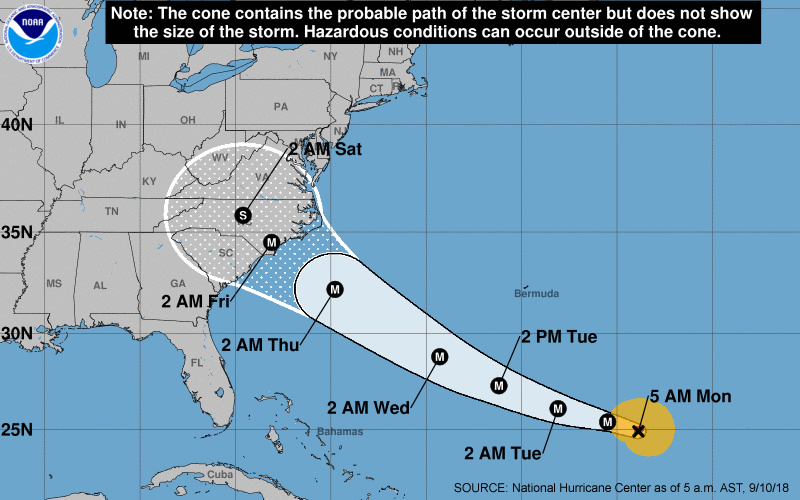
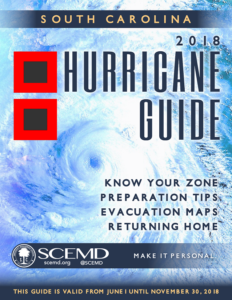
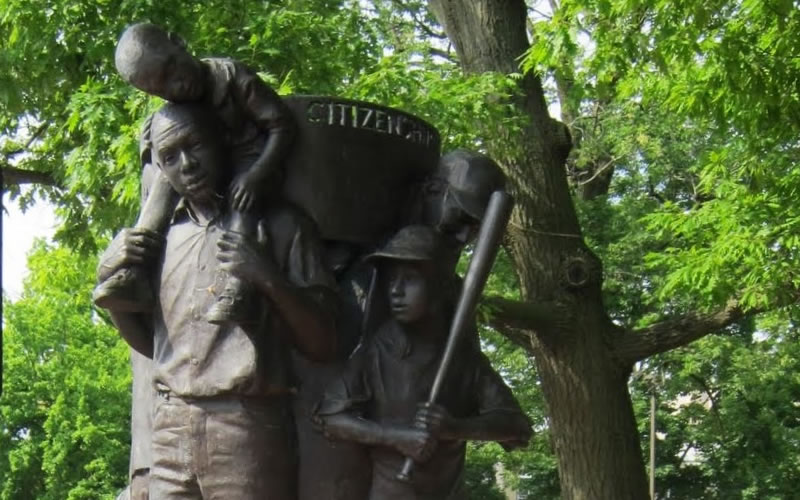

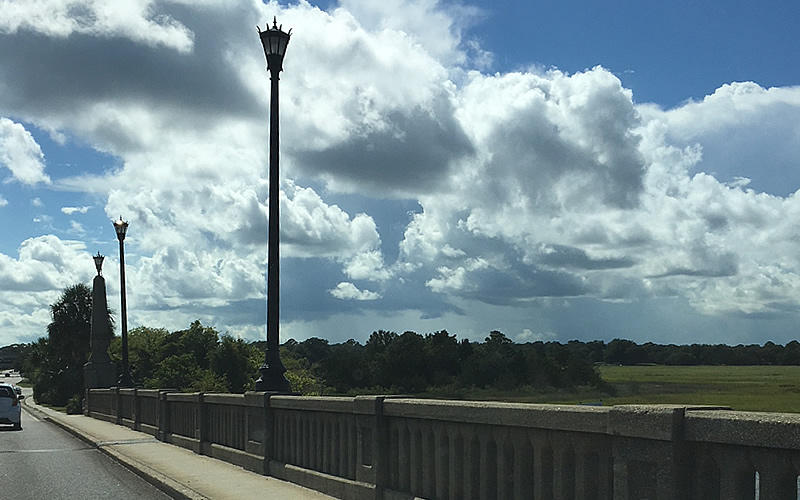

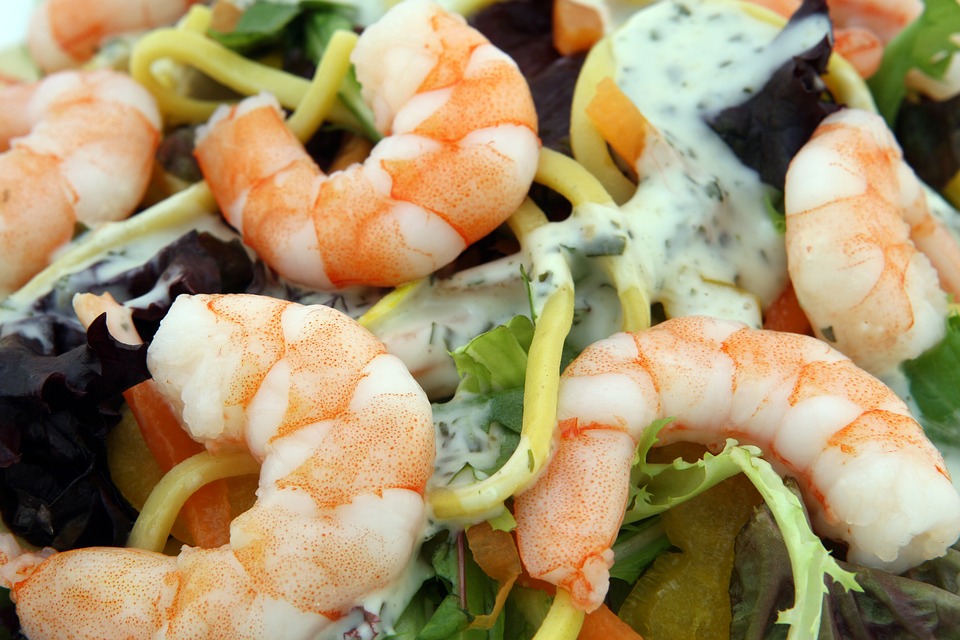

 We Can Do Better, South Carolina!
We Can Do Better, South Carolina!
























